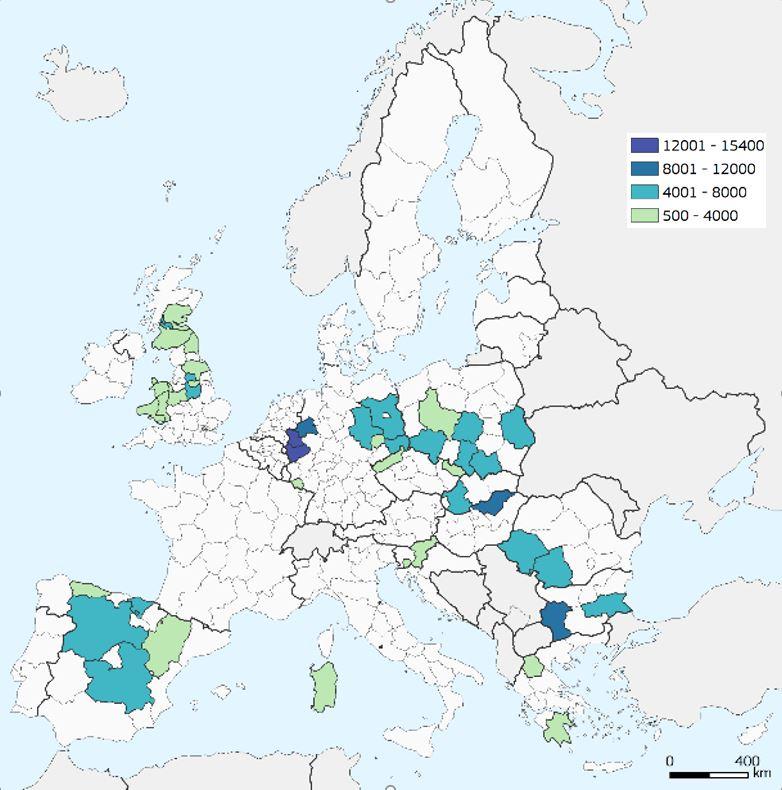
A new JRC report shows that in more than half of the EU coal regions the switch to clean energy can create more jobs than currently exist in the coal sector.
The report follows the adoption of the European Green Deal communication and the announcement of the EU’s Just Transition Mechanism, which aims to support communities most affected by the transition to climate neutrality by 2050, especially in the EU’s coal regions.
The deployment of renewable energy technologies in the coal regions can create up to 315 000 jobs by 2030, and up to 460 000 by 2050.
Coal production and use has declined for decades in the EU. Given the EU’s ambition to transform its energy system and become carbon neutral by 2050, the pace of the transformation can only accelerate.
This represents a unique challenge for the EU’s traditional mining regions, where around 200 000 people are employed in the coal sector.
A new JRC report on clean energy technologies in coal regions, finds that the deployment of clean energy technologies in more than half of the EU coal regions could offset job losses induced by the transition by creating up to 460 000 jobs in total by 2050.
The reports finds a remarkable potential for renewable energy technologies in the EU coal regions.
For instance, the maximum technical potential in these regions for wind energy alone (821 GW) could provide almost five-times the 2017 installed capacity of the technology in the EU (~169 GW).
Clean energy investments in coal regions can benefit from the availability of infrastructure, land, skills and industrial heritage already in place.
These investments should not only focus on the deployment of additional renewable energy capacity but also create employment opportunities to ensure a fair transition for affected regions and communities.
"EU coal regions should play an active role in the European energy transition. Most of the coal regions show a remarkable clean energy potential which in many cases can move them from a single- to a multi-industry model", says Zoi Kapetaki, lead author of the report.

The energy transition is already happening
The phasing out of coal is an ongoing reality in Europe and many coal regions have already started their energy transition.
In the region of Visonta, Hungary, 72 500 photovoltaic (PV) panels have been installed in coal mine sites, as well as in Klettwitz, Germany where five wind farms are placed in coal mine sites.
Several Member States, for instance Poland and the Czechia, have modified their regional development programmes co-financed by the EU’s cohesion policy to increase financial support for the coal regions.
Further, coal regions meet and discuss projects and good practices using the Platform on coal regions in transition launched by the European Commission in December 2017.
Employment potential of the regions
JRC scientists have clustered the 42 EU coal regions into three groups by comparing the employment in the coal sector with the potential in clean energy technologies at regional level.
Twenty-eight regions show a high potential for the deployment of additional renewable energy technologies; seven regions show a medium potential, while in the remaining seven regions the potential may not be enough to offset the employment in current activities.
The report warns, however, that a real effort on clean energy value chains will be needed to increase the chances that this potential materialises directly in the affected regions.
Also, in order to maximize the impact of the opportunities ahead it is necessary to have a close cooperation at all levels (EU, national, regional and local) and involving all related stakeholders (companies, regulators, investors, land-use planners and local communities).
Background
The European Union is committed to becoming the first climate-neutral bloc in the world by 2050.
This requires significant investment from both the EU and the national public sector, as well as the private sector.
The European Green Deal's Investment Plan - the Sustainable Europe Investment Plan – was presented on 14 January 2020.
It will mobilise public investment and help to unlock private funds through EU financial instruments, notably InvestEU, which would lead to at least €1 trillion of investments.
In 2018, the Joint Research Centre (JRC) considered the European regions that would be affected by the decline of coal mining and coal power-plant activities, and assessed the impact on regional jobs (the European regions considered do not prejudge the eligibility of the territories under the Just Transition Mechanism).
This report presents a concise overview of the role that clean energy technologies can play in the path to decarbonisation for the regions with coal mining activity.
A detailed fact sheet per region summarises the main findings.
Related Content
JRC report: Clean energy technologies in coal regions
Commission press release: Financing the green transition
Details
- Publication date
- 29 January 2020
